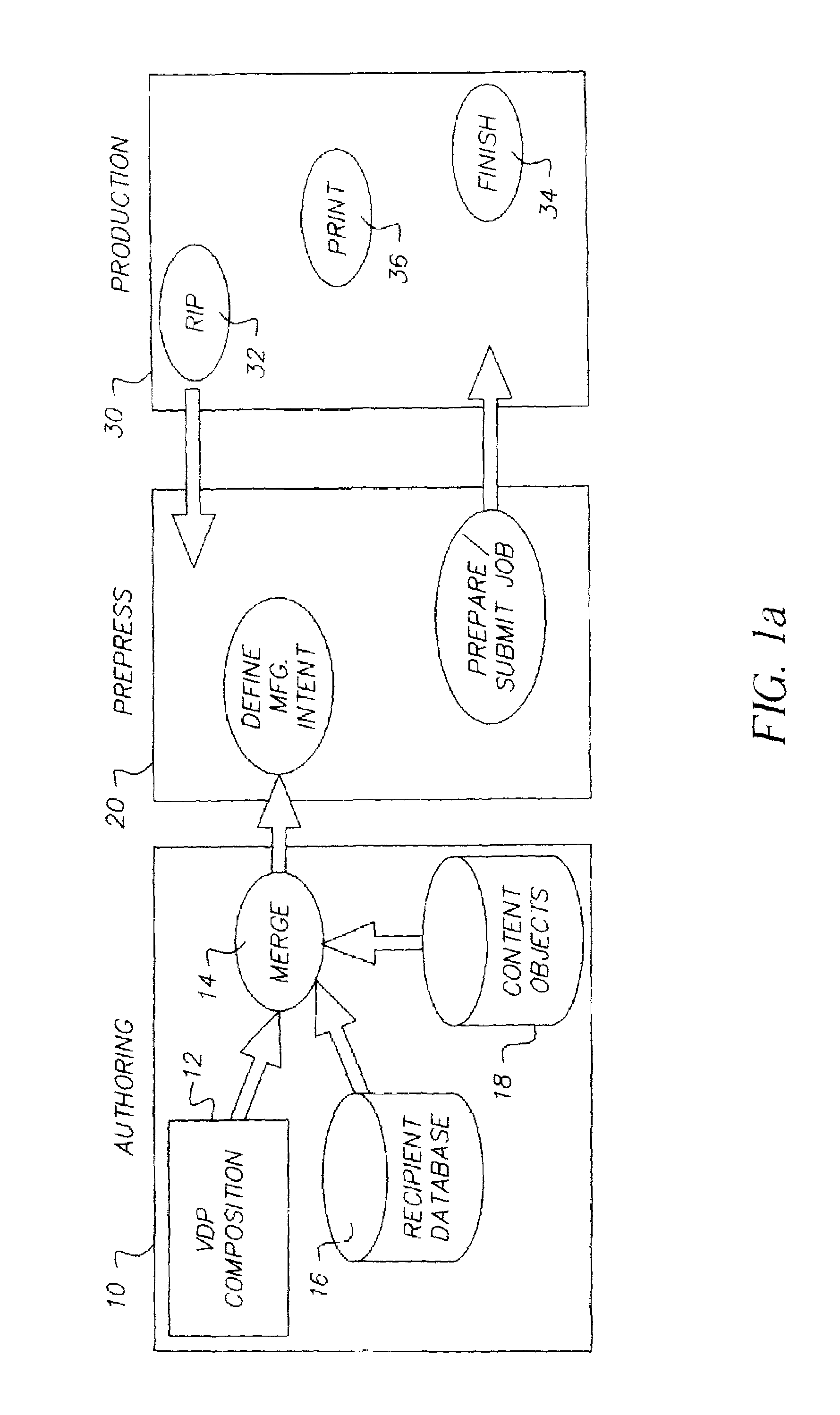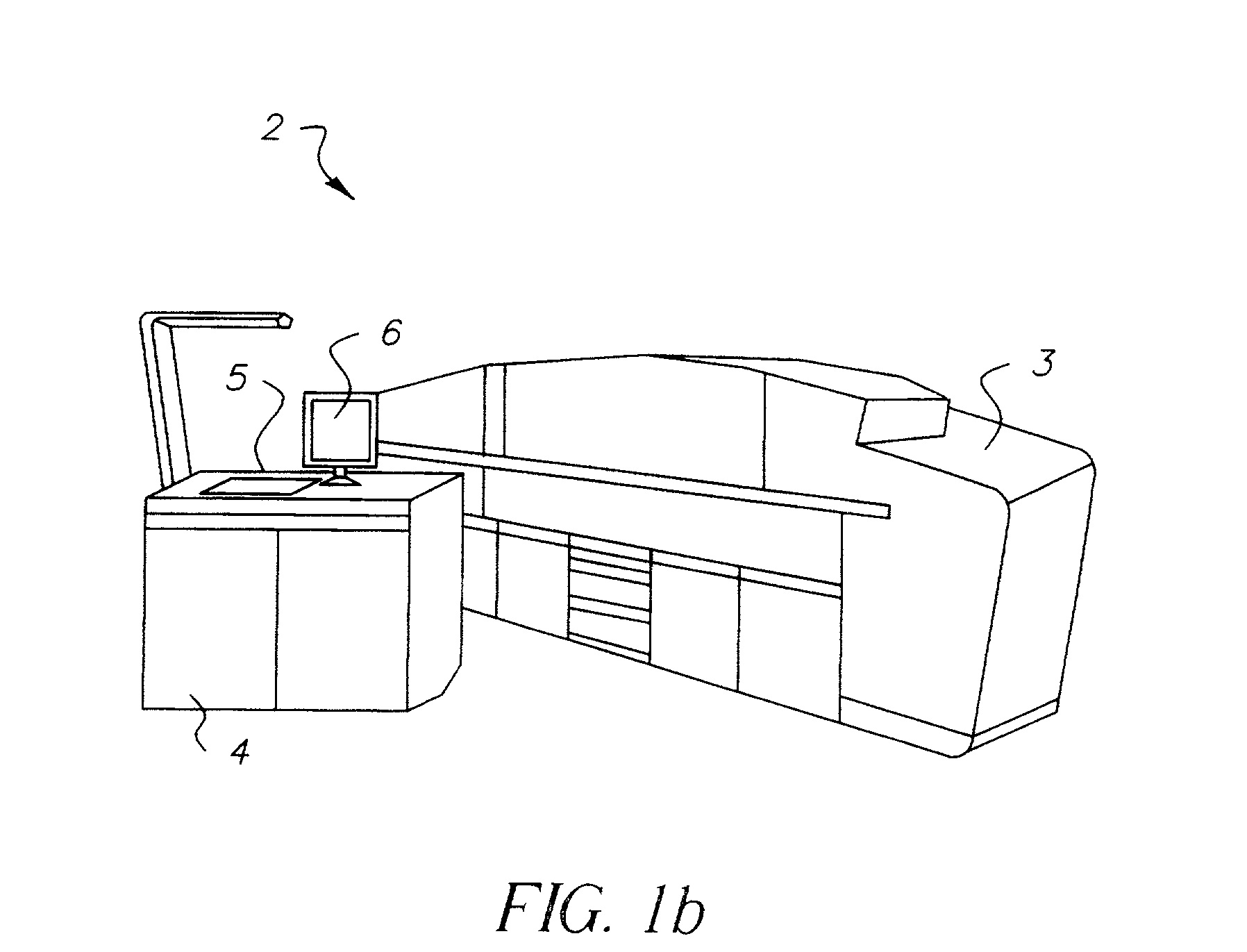Variable data printing using variants
- Summary
- Abstract
- Description
- Claims
- Application Information
AI Technical Summary
Benefits of technology
Problems solved by technology
Method used
Image
Examples
example 1
[0106]Assume that 100,000 Variable Data Print products are to be produced where the printed page quantities of the many print products vary from 4 to 16 pages. It is reasonable to assume that the weight of the various finished pieces will vary proportionally with each piece's number of pages. As such, and as part of bulk mailing optimization, it is very common for mailed pieces to be sorted into some number of bins based on specific weight ranges. Given that the quantity of pages of a finished document correlates proportionally to the finished weight of a piece, then the data itself can be used to estimate a finished piece's weight and be pre-sorted prior to actual production rather then having to be mechanically post-sorted into bins after finishing. Accordingly, using the number of pages within a document as a variant for determining sub-groups has distinct advantages.
example 2
[0107]Assume a job defines Variable Data Print products that have varied content as well as binding requirements. The variation in binding requires some pieces to be saddle stitched and others to be perfect bound. To keep this example relatively simple, assume all documents have exactly eight finished pages, printed two sided head-to-head, and none of the page images that are required to be perfect bound have bleeds (which would otherwise require pages to be imposed on oversized stock and be trimmed which would add to the overall manufacturing cost) and the finished documents required to be saddle stitched have a full bleed center fold (which requires trimming). Also, assume that the printing device to be used can print letter size (8.5×11) or two up letter (12×18). To best produce the job, the characteristics are during an analysis by the operator. The operator then decides to print all finished pieces required to be perfect bound in a first run, and the pieces to be saddle stitche...
PUM
 Login to View More
Login to View More Abstract
Description
Claims
Application Information
 Login to View More
Login to View More - R&D
- Intellectual Property
- Life Sciences
- Materials
- Tech Scout
- Unparalleled Data Quality
- Higher Quality Content
- 60% Fewer Hallucinations
Browse by: Latest US Patents, China's latest patents, Technical Efficacy Thesaurus, Application Domain, Technology Topic, Popular Technical Reports.
© 2025 PatSnap. All rights reserved.Legal|Privacy policy|Modern Slavery Act Transparency Statement|Sitemap|About US| Contact US: help@patsnap.com



